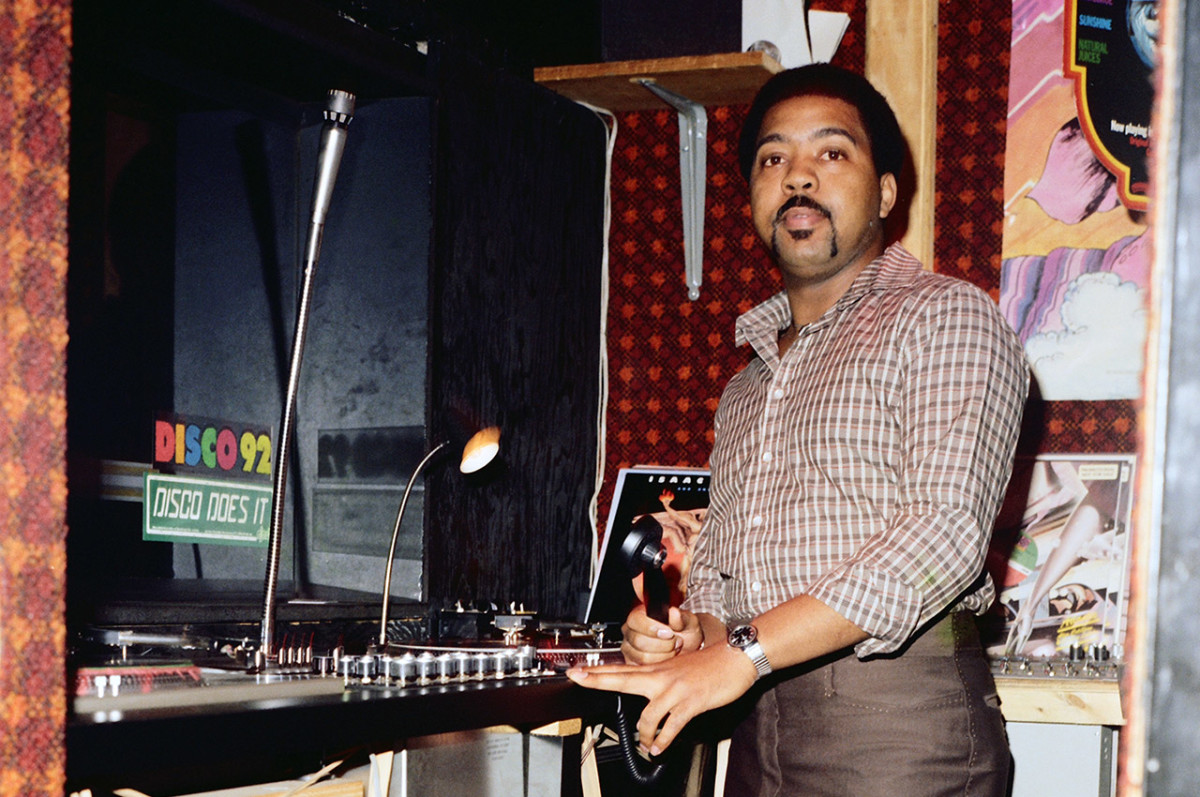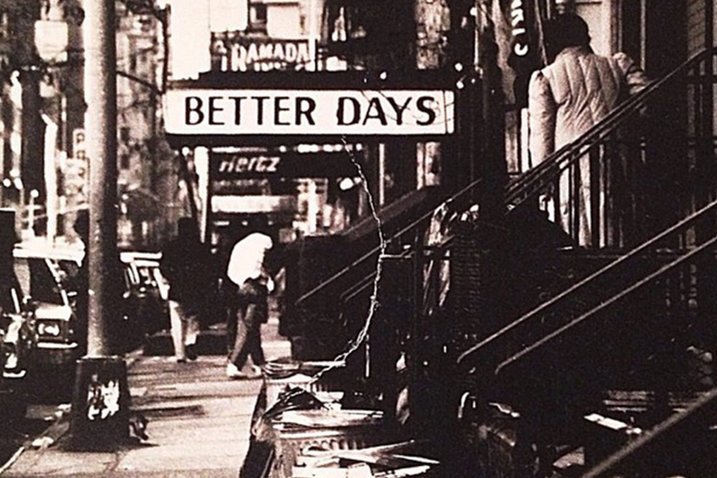Saturday Mass: Larry Levan and the Paradise Garage
Through his legendary residency at New York’s Paradise Garage, Larry Levan elevated DJing to an artform and provided the soundtrack to one of the most fertile moments in the history of dance music
Why is Larry Levan almost universally regarded as the greatest DJ who ever lived? Because at Saturday at three in the morning you were just as likely to find him on a ladder in the middle of the dance floor cleaning a mirror ball as you were behind the decks.

“The way I clean and vacuum my house, Larry shined the mirror ball and made sure the floors were waxed,” says David DePino, a DJ who used to open for Levan. “Everything had to be perfect. If he saw the mirror ball wasn’t as shiny as it should have been, he would get out the ladder and people would sit. They would sit on the floor and wait for him to finish, because they knew he was getting into the party. Sometimes he would go up after shining the mirror ball, and then he blacked out the room and pumped up the sound. They would scream and applaud him. They knew the party was getting ready to start.”
It would strike anyone involved in contemporary clubland as utter madness for a DJ to stop a set dead near peak time to personally polish a few tiny tiles of glass dangling 20 feet above the dancers’ heads, but Levan understood that DJing isn’t simply about beat matching. It’s about throwing a party, which he believed was an art form and not a mere profession. In sharp contrast to today’s careerist DJs and their ruthless two hour wham-bam-thank-you-ma’am sets, Levan put his heart and soul into every detail at the club with which he will forever be associated, New York’s Paradise Garage.
On the surface, there was nothing particularly special about the Paradise Garage. As the latter half of its name indicates, it was housed in a nondescript parking garage at 84 King Street in Manhattan. But Levan treated the club as a temple to music. This complete devotion to music, to dancing, to the party, could be seen in every element of the club. The sound system, the mirror balls, and even the garbage cans were treated with reverence by both the club goers and Garage employees. And this relationship extended to the dance floor, where Levan was able to foster the kind of beloved community of which legends and myths are made.
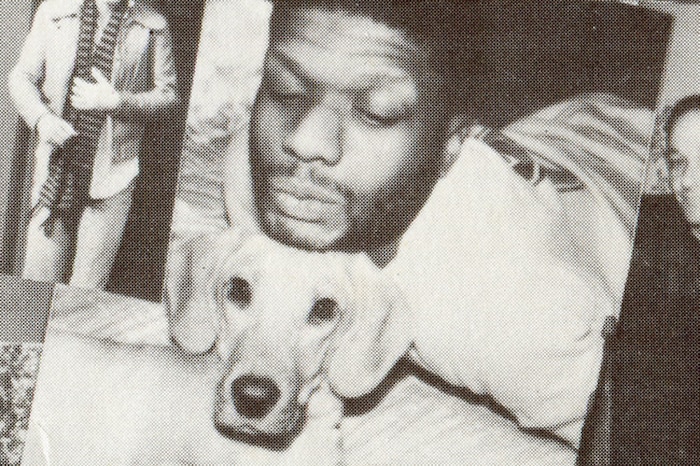
Paradise Garage’s heyday, from when it officially opened in 1978 to the day it closed its doors in the summer of 1987, was a time of enormous upheaval in New York and in particular the Big Apple’s gay community. The city was recovering from its financial collapse in the mid-’70s, but only through draconian cutbacks in services and mercenary Reaganomics. New York in the ’80s was ruthless and cutthroat. Heroin and crack had ravaged the inner city; the outer borough bedroom communities retrenched and became increasingly insular. The post-Stonewall explosion of gay liberation that had produced disco was in retreat, not just to the vicissitudes of popular culture but to increasing homophobic violence and a horrific disease that wouldn’t be identified until the middle of the decade.
You needed a carapace of steel to survive New York in the ’80s, but you also needed a space where you could shed your skin, shake off the daytime daze and find some solace. For thousands of people every weekend, Paradise Garage was that space. It was Saturday night and Sunday morning rolled into one earthly ritual where the spirit – however it manifested itself – would take you to a better place, and Levan was its guiding force.
Levan was born in Brooklyn on July 20, 1954 as Lawrence Philpot. His parents were never married, and as a teenager he – along with his brother Isaac and sister Minnie – took the last name of his mother (also Minnie, a dressmaker). Levan attended Erasmus Hall High School in Flatbush at a time when the neighborhood was transitioning from predominantly Jewish to predominantly African-American. Although Erasmus had a long tradition of producing creative types (Barbra Streisand, Neil Diamond, Clive Davis, Mickey Spillane, Mae West, Barbara Stanwyck, Marky Ramone, and Bernard Malamud are all former students), Levan’s flamboyance – like dyeing his hair orange years before punk – didn’t exactly endear him to his fellow students and he constantly found himself in scrapes and scuffles.
Levan found solace in Harlem’s drag ball world, which eventually gave birth to voguing. Outcasts in both the African-American and gay communities, black drag queens in New York formed a tight-knit scene and threw competitions based around theatricality and throwing shade. The queens organized themselves into Houses – not unlike Mardi Gras tribes or Brazilian samba schools – in which the understudies would make grand gowns for the queen to parade in at the ball. Around 1969, while beading a dress for a queen known as Duchess, Levan met his lifelong friend and fellow traveler Francis Nichols, who would, as Frankie Knuckles, become every bit as influential as Levan.
Levan found early solace in Harlem’s drag ball world, a scene which eventually gave birth to voguing.
The two quickly became inseparable, and in the aftermath of the Stonewall rebellion that allowed gay nightlife to come out of the closet, their focus soon shifted from Harlem to the gay nightclubs that started to spring up downtown like The Sanctuary and the Planetarium. Levan and Knuckles would discover their true calling, however, when they were introduced to The Loft, a private dance party hosted by David Mancuso at his illegal loft space at 647 Broadway.
Mancuso, who grew up in a Catholic orphanage, decorated The Loft as if it were hosting a child’s birthday party: crepe paper streamers and balloons dangled from the ceiling, in the corner of the main room there was a Christmas tree with its fairy lights on year-round, and the invitations were adorned with images of Our Gang.
Mancuso did not serve alcohol, but put out bowls of punch, fruit, and candy for attendees. The music Mancuso played at The Loft was similarly soothing. According to journalist Vince Aletti, “Dancing at the Loft was like riding waves of music, being carried along as one song after another built relentlessly to a brilliant crest and broke, bringing almost involuntary shouts of approval from the crowd, then smoothed out, softened, and slowly began welling up to another peak.”
Mancuso was an audiophile and with Alex Rosner, an electronics engineer who escaped Nazi Germany through Schindler’s list, he created The Loft’s now-legendary sound system. With highs that shimmered (thanks to Rosner’s array of tweeters that faced north, south, east and west) and lows that cocooned the dancers, Mancuso attempted to tune into what he called “that natural rhythm, that three billion year-old dance – I just applied it through these artificial means which were amplifiers and records.” This almost Buddhist approach to sound was rounded off by Mancuso’s Koetsu record cartridges, which were designed by a Japanese painter who also made samurai swords.
While Mancuso played funky, percussive records like Manu DIbango’s “Soul Makossa,” James Brown’s “(Get Up I Feel Like Being a) Sex Machine,” Olatunji’s “Jin-Go-Lo-Ba (Drums of Passion),” and Little Sister’s “You’re the One,” these were tempered by weird, ethereal records from the depths of Mancuso’s collection like a recording of the Missa Luba by Les Troubadours du Roi Baudoin, a group of 45 young Congolese boys singing a Christian mass in a distinctly African style. As Levan reminisced to Steven Harvey in 1983, “I used to watch people cry in The Loft for a slow song because it was so pretty.”
While mainstream disco would be caricatured as the unbridled hedonism of suburban Stepford Wives and their himbo admirers, the emotional intensity of The Loft sought to create a community centered on the notion of the party. The prime movers of the Loft scene were the “Loft babies,” young kids from the outer boroughs who were profoundly influenced by The Loft and who would become the second wave of disco DJs: Levan, Knuckles, David Rodriguez, and Nicky Siano.

In early 1972, Nicky Siano opened The Gallery on 22nd Street, the first avowedly commercial club to follow in The Loft’s image. A couple of weeks after The Gallery had opened, Siano hired Knuckles and Levan to decorate the club, prepare the buffet and the punch, and to distribute acid to the clubgoers. Playing on three turntables (while controlling the club’s lights with foot pedals), he would take records like Gloria Spencer’s gospel stormer, “I Got It,” and stretch it completely out of shape, extending until breaking point the beginning where Spencer screams over piston-pumping cymbals.
Siano is credited with pioneering the use of vari-speed turntables in club DJing. Taking advantage of the turntable’s ability to change speed, and thus the pitch and tempo of the record it’s playing, Siano was able to craft mixes and blends that were almost letter perfect. In Siano’s hands, the transitions between songs were no longer herky-jerky, sputtering, awkward dance floor moments; they were now taut, well defined and smooth.
Levan was a natural behind the turntables, blessed with a musical instinct – just like Mancuso and Siano – that could not be taught.
One night in 1972 when The Gallery was closed, Levan asked Siano if he could play some records over the club’s system. Siano agreed and started to give Levan some advice about DJing, which, according to Siano, Levan started incorporating immediately without even thinking about it. Levan was a natural behind the turntables, blessed with a musical instinct – just like Mancuso and Siano – that could not be taught. “Larry was the child of Nicky and David,” says DePino. “David was very intense and Nicky was very flamboyant and loud and crazy. I don’t think Larry copied Nicky or David, but Larry learned and Larry knew what a DJ was supposed to do through Nicky and David.”
Levan got his first DJing gig at age 18 at The Continental Baths on the Memorial Day weekend of 1973. “I was doing lights and the DJ walked out,” Levan recalled to journalist Steven Harvey. “The manager who was like, a six foot three inches, Cuban guy, said, ‘You’re going to play records tonight!’ I told him that I didn’t have any records. ‘You’ve got five hours!’” Levan managed to find some records and ended up playing the Baths for about a year.
The Continental Baths was pretty much the diametric opposite of The Loft and The Gallery. Located in the basement of the old Ansonia Hotel on 74th and Broadway, The Baths were a sprawling all-male health club that advertised their aim to recapture “the glory of Ancient Rome.” In addition to the expected saunas and steam rooms, the Baths had a gym, Olympic-sized swimming pool, salon, a stage where Bette Midler and Barry Manilow got their start, a dance floor, and a restaurant. The Baths’ in-house VD clinic, however, was a pretty good indicator of the Baths’ true priorities. Although the DJ was largely an afterthought at the Baths, the sheer size and notoriety of the place ensured that Levan would gain a following.
Levan left the Baths in 1974 to play at Richard Long’s after-hours loft club, SoHo Place at 452 Broadway. While Levan’s growing fanbase ensured that the place was packed, the club was in Long’s workshop and was essentially a showcase for Long’s nascent sound equipment business. Unfortunately, the club’s booming bass ensured that it wouldn’t stay open for very long.
The Paradise Garage was built explicitly with Levan in mind – one of the few nightclubs ever to be constructed for a specific DJ.
As soon as SoHo Place closed, Levan was asked by Michael Brody to DJ at his newly opened club at 143 Reade Street in what is now known as Tribeca. The club was situated in the vault of an old furrier’s warehouse and still had a temperature control switch which Levan would play with throughout the night. It was at Reade Street that Levan developed the techniques as well as the sound – the deep, dark bass, the queasy, dubby emotion that he would extract from records – that would make him a legend.
With an unsympathetic landlord and space issues, Reade Street was never going to be the right space for Levan’s rising star, so Brody closed the club in 1976 and asked Levan not to play anywhere else until he found a new place. That new venue was the Paradise Garage and it was built explicitly with Levan in mind – one of the few nightclubs ever to be constructed for a specific DJ. The Garage unofficially opened in January 1977 with the “Construction Parties” which were held in the club’s small 900 square-foot Grey Room in order to raise money for the rest of the club’s construction.

When the full club (with the second largest dance floor in New York) finally officially opened in February 1978, it was a mess. There was a delay in the delivery of some equipment for the sound system and even though it was in the middle of a snowstorm, no one was allowed inside until it was fixed. Once they got inside, it was practically as cold as it was outside. Almost all of the A-list crowd that Brody had invited left, vowing never to return.
When the full club finally officially opened in February 1978, it was a mess.
This was perhaps the best thing that ever happened to both the Garage and Levan. With the pretty boys staying away, Levan was liberated from having to please a crowd that he didn’t care for (and one that would have never tolerated his eccentricities). Levan was now able to translate the lessons he learned from Mancuso and Siano to a club that became the preserve of the most serious dancers in the city – people who appreciated the atmosphere Levan created, and the reverence with which he treated the music and the club as a whole. As with The Loft and The Gallery, Levan created a relationship with his clubgoers that bordered on the devotional.
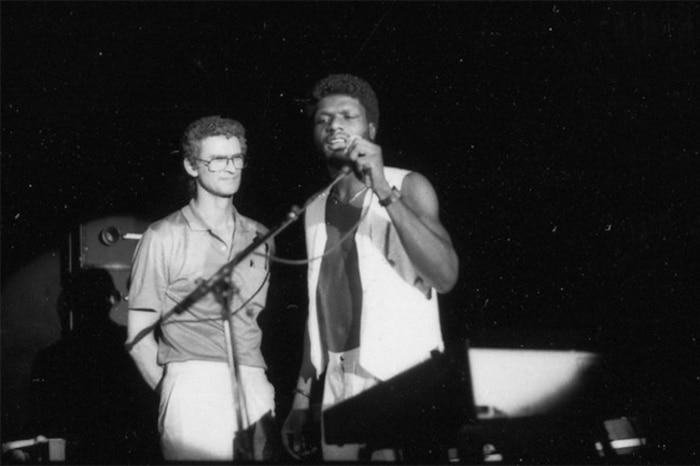
The sermons to the flock were delivered by a sound system that has never been equalled. Designed by Richard Long, the system was ferociously loud (some people say too loud) and the bass made your bowels quake. But it was also crystal clear and capable of remarkable detail. “The walls were all treated with fiberglass, and so was the ceiling,” says DePino. “When the lights went on there was nothing pretty about the dance floor, and when the lights were off, it was just a black box. But it was treated so sound got absorbed on one wall so it didn’t go back and forth. There was no echo. The fiberglass in the ceiling was positioned in certain angles to make V-shapes to create horns. Richard came in every Friday with this little machine that created pink noise and he cued the sound system. Then through the night the Garage would get very hot because there was no air conditioning and you had 3,000 people dancing. It had exhaust and in-flow, but the sound would change as the speakers heated up and as the room got more crowded, so Larry would go behind the amplifiers and tweak them all night. Come Saturday morning when you went in and put the sound on, it was like, ‘Oh my God, it’s horrible.’ Richard had to come in again. Richard had to cue the room twice a week… As good as it sounded at 12 o’clock with two people on the dance floor, it was as good as it sounded at 5 o’clock in the morning with 2,000 people dancing and at 10 in the morning when 3,000 people dancing.”
Larry wanted you to feel like you were on acid even if you weren’t.
In addition to fine-tuning the sound system, Levan deployed little tricks like gradually upgrading the cartridges on his turntables throughout the night, so that the peak would be overwhelming in its effect. Armed with a sound system where the bass would never buckle, Levan was free to shut off the treble when the mood took him, making the whole building judder and shudder with low-end pressure. Levan would use the EQ and volume knobs to tease new nuances out of a record, but he would also play with them with the glorious abandon of a toddler abusing the knobs of an old radio. As DePino says, “Larry wanted you to feel like you were on acid even if you weren’t.”
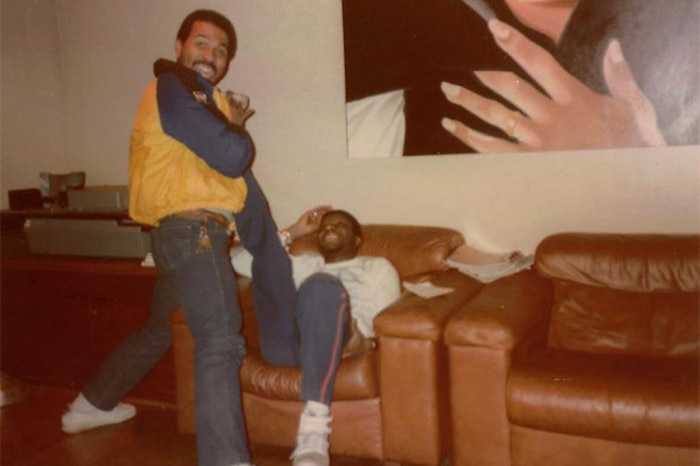
Yet for all his focus on technical minutiae, Levan was somewhat less than virtuosic behind the decks. “Larry was all about sound,” says DePino. “He could care less about mixing… There were nights when he came in, he concentrated, his mixes were perfect and smooth, and there were some nights he came in and he banged everything… because the banging is what made you shock people. You were dancing ‘bah, bah, bah,’ and then suddenly you hear ‘boom’ and you went ‘arrggh.’ Larry loved the reaction. Larry loved to shock, and he was controlling the dance floor. He did a lot of popping and a lot of banging in [the records] and he did things that made people constantly scream. Mixing, he liked when it got intense. When you mix beautifully from one record to another, in your mix you create a third record because they blended so well together. You could do that for a while, but Larry always felt if you did that all night long it was boring. It was like a six hour record was on.” Levan broke just about every rule in the DJ manual: he would drop ballads and a capellas at peak time, play a single record for an hour as he did in 1984 with Colonel Abrams’s “Music Is the Answer,” leave seconds of dead air in the midst of a set, and let two records run together, creating a grating cacophony. But Levan also created an intensity on the dance floor that has never been replicated. Some of his signature tics – like cutting off a record mid-flow or his car-crash mixes – seemed almost like the DJing equivalent of punk rock dissonance or feedback. He was after that moment Roland Barthes defined as “punctum”: that instant of explosive insight where everything suddenly becomes clear, the crack of the Zen master’s cane across the back of your head, the divine contact that comes with the delirium of a whirling dervish ritual.
Some of his signature tics – like cutting off a record mid-flow or his car-crash mixes – seemed almost like the DJing equivalent of punk rock dissonance or feedback.
But Levan also told stories or made comments through his song selection. “Larry felt the night needed to be a journey,” says DePino. “So from the first record he put on, whatever time he came in, whether it was exactly 12:00 or 2:00 or 3:00, he told a story through his music. If he was in a bad mood, you heard the bad mood. You heard hard records come in hard. They were angry, you broke my heart; you did this. If he was in a great mood he was like, ‘We’re going to dance; we’re going to party. They’ll listen to the lyrics.’ He told a story.”
“Out of all the records you have, maybe five or six of them actually make sense together,” Levan told Steven Harvey. “There is actually a message in the dance, the way you feel, the muscles you use, but only certain records have that. Say I was playing songs about music – ‘I Love Music’ by The O’Jays, ‘Music’ by Al Hudson – and the next record is ‘Weekend’ [by Phreek or Class Action]. That’s about getting laid, a whole other thing. If I was dancing and truly into the words and the feeling and it came on, it might be a good record, but it makes no sense because it doesn’t have anything to do with the others. So, a slight pause, a sound effect, something else to let you know it’s a new paragraph rather than one continuous sentence.”
Perhaps more than any other DJ, Levan had a telepathic relationship with his dancers.
Perhaps more than any other DJ, Levan had a telepathic relationship with his dancers. Stories abound of Levan’s “dance floor evangelism”: people that he knew claiming that they felt certain records talking to them specifically and then looking up at the DJ booth to see Levan glaring at them or blowing them kisses, depending on the message the song was conveying. “Larry was a puppeteer,” says DePino. “He controlled the dancers. There were times Larry would … like five, six o’clock in the morning Larry would see a little group that would start to get their coats from the coat room, bring them to their other two or three friends and start to put their coats on and say goodnight to people. He would go, ‘Watch this.’ And he put on a record that he knew that little group loved and as they were just kissing each other goodbye to the rest of their friends and start to walk. They’d look up and they wave their fists at him like, ‘You son of a bitch, Larry!’ They ripped off their coats and start dancing and he keep them there another hour-and-a-half. He would say, ‘Watch them, they’re leaving. Unh-uh, they’re not leaving.’ Just like I guess if you’re a good waiter and a table full of people that come regularly every Friday; you know who to bring coffee to and you know who says, ‘No, I don’t drink coffee.’ He knew his dance floor.”
Levan also took risks by constantly searching for records from outside of “dance music” that fit his aesthetic. He championed records like The Clash’s “Magnificent Dance,” Jah Wobble’s “Snakecharmer,” Manuel Göttsching’s instrumental concept album about chess, E2-E4, and Marianne Faithfull’s “Why’d Ya Do It?” As time went on – and disco as a genre became less and less popular – Levan’s music got darker, weirder, more disjointed, particularly the remixes that he made specifically for his own dance floor.
The darkness that haunted the corners of his music mirrored Levan’s own self-destructive and anarchic personality.
Levan was one of disco’s true dub champions, and his mix of Instant Funk’s “I Got My Mind Made Up” and his production of the Peech Boys’ “Don’t Make Me Wait” are classics of dub technique used in the service of dance floor imperatives: delaying climax while building tension and stretching the beat. His most radical remix, however, just may be his dub mix of Smokey Robinson’s minor R&B hit, “And I Don’t Love You.” One of the most famous voices in the history of popular music becomes nothing but a ghost, mournfully intoning the title phrase a couple of times from behind a fog of echo and distended guitar.
The darkness that haunted the corners of his music mirrored Levan’s own self-destructive and anarchic personality. When the Garage closed in 1987 due to the spectre of AIDS and internal strife within the club’s organization, Levan turned increasingly to drugs, selling his records to maintain his habit. In 1988, Levan landed a residency at The World on East 2nd Street, but separated from the Garage, Levan wasn’t the same. “The World was a nice space, but it just wasn’t the Garage,” says DePino. “Larry didn’t have the power. It got packed because Larry was there, but the owners didn’t understand him, so if Larry would do something strange, and the people would maybe not dance but appreciate what he was doing or applaud, the owners would panic. ‘Why is he doing that?’ He didn’t have the security and that’s all he knew. Larry knew freedom and didn’t know in another situation not to use that freedom. It wasn’t appreciated like it was at the Garage. To me, it was sad.”
Levan helped open the Ministry of Sound in London in 1990 and toured Japan in 1992 with François Kevorkian. Seemingly aware that his time on Earth was short, Levan’s sets were emotional valedictories, even though he cobbled them together from records that weren’t his own. Two months after returning from the Japanese tour, Levan died on November 8, 1992 at age 38 of heart failure resulting from endocarditis.
Levan was a singular presence behind the decks. Perhaps he was a genius, but Levan’s legend is also the result of timing. No other DJ has ever had the security that Michael Brody provided, and certainly no other DJ had a crowd willing to cater to his every whim. As a result, Levan was able to take risks that no other DJ ever could. As DePino says, “the Garage was a perfect storm.”
Red Bull Music Academy was a proud supporter of Tim Lawrence during the writing of his book Life And Death On The New York Dance Floor, 1980-83. To learn more about this fertile time in New York nightlife, check out the series of YouTube playlists taken from his book celebrating the scene. Embedded below is a playlist from Larry Levan from the Paradise Garage in 1980.
Header image © Paul McKee
